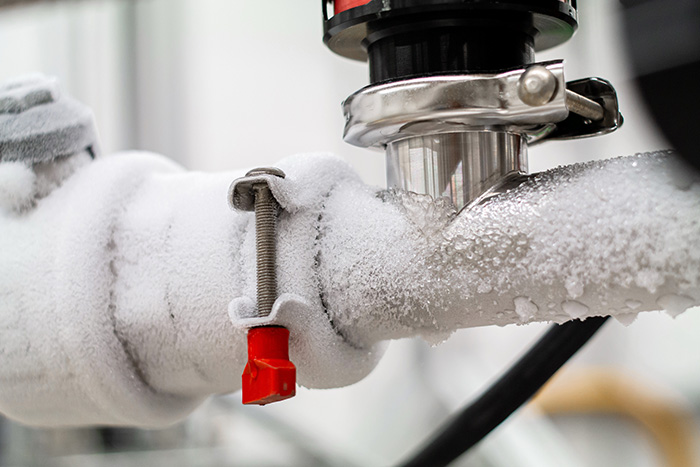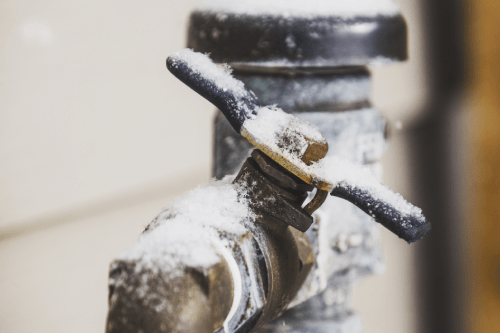Shielding Pipes from Cold Weather Issues: Critical Tips
Shielding Pipes from Cold Weather Issues: Critical Tips
Blog Article
Just how do you feel in relation to How to Prevent Your Pipes From Freezing?

Cold weather can ruin your pipes, specifically by freezing pipes. Right here's how to stop it from taking place and what to do if it does.
Introduction
As temperatures decline, the risk of frozen pipelines rises, potentially resulting in costly repair work and water damage. Understanding how to stop icy pipelines is important for house owners in cold climates.
Avoidance Tips
Shielding prone pipes
Wrap pipelines in insulation sleeves or make use of warmth tape to safeguard them from freezing temperature levels. Focus on pipelines in unheated or external areas of the home.
Heating techniques
Keep interior areas properly heated up, specifically locations with plumbing. Open up cabinet doors to enable warm air to flow around pipes under sinks.
Exactly how to recognize icy pipelines
Seek decreased water flow from faucets, unusual odors or noises from pipelines, and visible frost on subjected pipes.
Long-Term Solutions
Architectural changes
Consider rerouting pipelines away from outside walls or unheated areas. Include extra insulation to attics, cellars, and crawl spaces.
Updating insulation
Invest in high-grade insulation for pipelines, attics, and wall surfaces. Correct insulation assists keep consistent temperature levels and reduces the danger of frozen pipes.
Securing Outdoor Plumbing
Garden tubes and outdoor taps
Separate and drain pipes yard hoses prior to wintertime. Mount frost-proof spigots or cover outdoor taps with shielded caps.
Comprehending Icy Pipes
What triggers pipes to freeze?
Pipes freeze when subjected to temperatures below 32 ° F (0 ° C) for extended durations. As water inside the pipelines ices up, it increases, taxing the pipe wall surfaces and potentially causing them to burst.
Threats and problems
Frozen pipes can bring about water supply interruptions, residential or commercial property damage, and pricey repairs. Burst pipelines can flood homes and create substantial architectural damage.
Signs of Frozen Pipes
Recognizing icy pipes early can stop them from rupturing.
What to Do If Your Pipelines Freeze
Immediate actions to take
If you believe frozen pipelines, maintain faucets open up to ease pressure as the ice melts. Utilize a hairdryer or towels taken in hot water to thaw pipes gradually.
Verdict
Preventing icy pipes requires aggressive procedures and fast responses. By comprehending the causes, signs, and safety nets, house owners can protect their plumbing throughout cold weather.
5 Ways to Prevent Frozen Pipes
Drain Outdoor Faucets and Disconnect Hoses
First, close the shut-off valve that controls the flow of water in the pipe to your outdoor faucet. Then, head outside to disconnect and drain your hose and open the outdoor faucet to allow the water to completely drain out of the line. Turn off the faucet when done. Finally, head back to the shut-off valve and drain the remaining water inside the pipe into a bucket or container. Additionally, if you have a home irrigation system, you should consider hiring an expert to clear the system of water each year.
Insulate Pipes
One of the best and most cost-effective methods for preventing frozen water pipes is to wrap your pipes with insulation. This is especially important for areas in your home that aren’t exposed to heat, such as an attic. We suggest using foam sleeves, which can typically be found at your local hardware store.
Keep Heat Running at 65
Your pipes are located inside your walls, and the temperature there is much colder than the rest of the house. To prevent your pipes from freezing, The Insurance Information Institute suggests that you keep your home heated to at least 65 degrees, even when traveling. You may want to invest in smart devices that can keep an eye on the temperature in your home while you’re away.
Leave Water Dripping
Moving water — even a small trickle — can prevent ice from forming inside your pipes. When freezing temps are imminent, start a drip of water from all faucets that serve exposed pipes. Leaving a few faucets running will also help relieve pressure inside the pipes and help prevent a rupture if the water inside freezes.
Open Cupboard Doors
Warm your kitchen and bathroom pipes by opening cupboards and vanities. You should also leave your interior doors ajar to help warm air circulate evenly throughout your home.

We are very fascinated by 6 Ways to Prevent Frozen Pipes and I am assuming you appreciated my blog entry. Are you aware of somebody else who is fascinated by How to Prevent Your Pipes From Freezing? Feel free to promote it. Thanks a lot for your time spent reading it.
Book Inspection Report this page